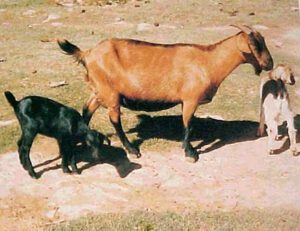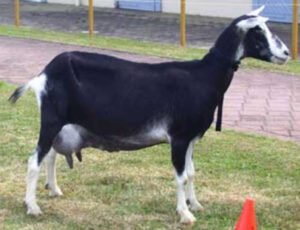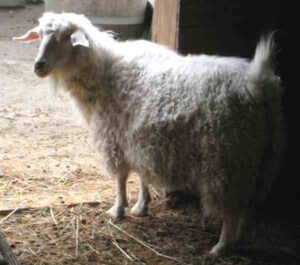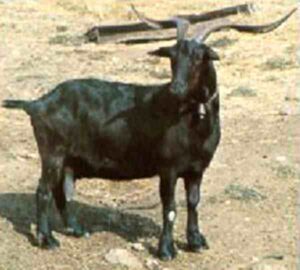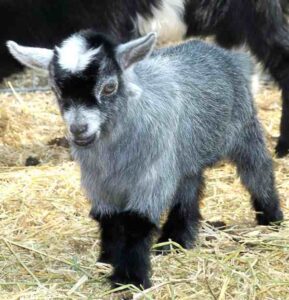Nigerian dwarf goats are considered as the best miniature dairy goat breed. They are highly milk productive compared to their small size. Nigerian dwarf goats were originated from West Africa.
Most of the people raise them especially as pets. They are very popular as pets mainly for their easy maintenance and small stature.
But along with pets, they are good milkers. Nigerian dwarf goats were first imported to the USA via sea, during back to the eighteenth century.
At that time, Nigerian dwarf goats were used as food for the large cats such as lions in the zoo. See physical characteristics and behavior of Nigerian dwarf goats below.
Physical Characteristics Of Nigerian Dwarf Goats
There are two different height standards for the Nigerian Dwarf goats. The NDGA states bucks should ideally be 19 to 21 inches with a maximum allowed height of 21 inches and does should ideally be 17 to 19 inches in height with a maximum allowed height of 21 inches.
ADGA and American Goat Society require bucks to be less than 23.5 inches at the withers and does to be less than 22.5 inches at the withers. Nigerian dwarf goats come in many colors.
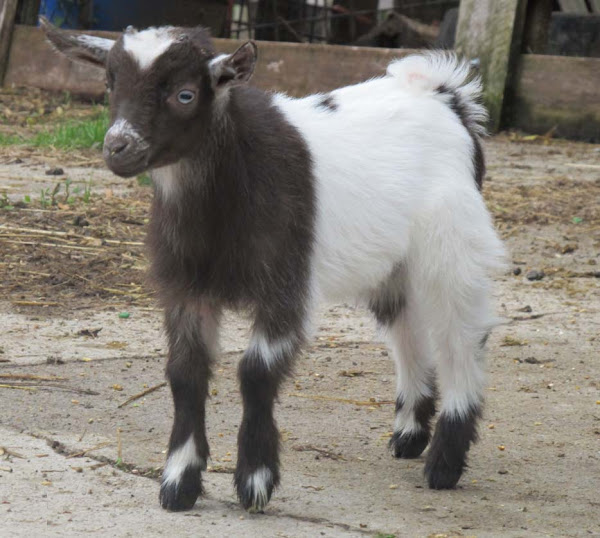
Color of the Nigerian dwarf goats include black, red, cream, white and different mixed color. Some goats have white frosting on their ears.
Most of the Nigerian dwarf goats naturally have horns. If you don’t like their horns, then you can disbud them at their young age (usually within their two weeks of age).
Usually disbudding is done for safety to the goat, its herd mates, and human caregivers. Usually the color of Nigerian dwarf goat’s eye are black, but some goats have blue eyes.
Behavior
Usually Nigerian dwarf goats are gentle, well behaved and friendly in nature. They are easily trainable. Their friendly nature, small size and colorful appearance have made them very popular as pets.
They are easily managed. You can bottle-feed the Nigerian dwarf goat’s kids. And doing this will make them more bonded with you and your family members.
Most of the people allow their does to take care of their babies naturally. Your goats will enjoy walking with you, if you take them with you to have a walk.
If you intend to raise a or a few Nigerian dwarf goats as pets, then try to raise does or wethers.
Bucks are not excellent as pets because they can have an objectionable odor. Consider wethers and does as pets.
Even they are very friendly with the children. So you don’t have to think about your children’s safety if you raise some Nigerian dwarf goats as pets.
Breeding
Nigerian dwarf goats can breed year-round. There is no specific breeding season for them. After successful mating, their gestation period stays for about 145 days to 153 days.
On an average, a doe can give birth to 2 to 4 babies at a time. Male goats become mature very early (usually within seven months). And females become mature at their seven to eight months of age.
Milk Yield
Nigerian dwarf goats are excellent milkers compared to their body size, and considered as the best miniature dairy goats. On an average, a doe can produce about 2.5 pounds of milk daily.
Nigerian dwarf goats breed year-round. So you will get fresh milk for your family consumption throughout the year, if you raise a few does.
Their milk contain higher butterfat content than milk from other full-sized dairy goats. Usually their milk contain about 5% of butterfat content.
But this amount can increase as high as 10% at the end of a lactation. Their milk has a sweet flavor and most of the people like their milk.
However, review full breed profile of the Nigerian Dwarf goats in the following table.
| Breed Name | Nigerian Dwarf |
| Other Name | None |
| Breed Purpose | Milk, Meat, pet |
| Breed Size | Small |
| Buck | About 19-23.5 inches (48-60 cm) |
| Doe | About 17-22.5 inches (43-57 cm) |
| Horns | Yes |
| Climate Tolerance | All Climates |
| Coat Color | Many |
| Good for Stall Fed | Yes |
| Rarity | Common |
| Country/Place of Origin | Nigeria |

